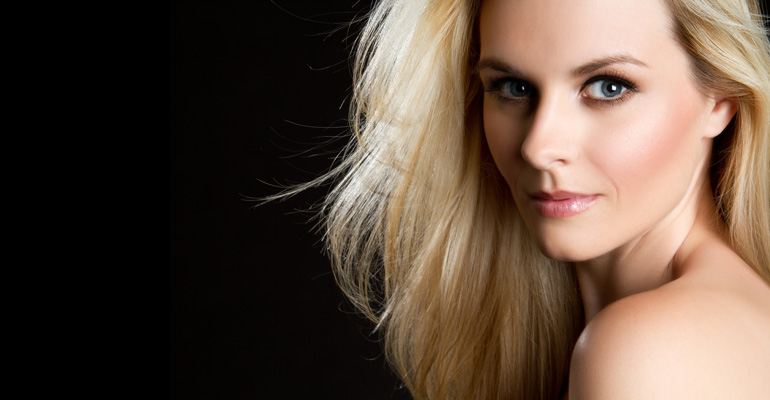[ATTENTION PHOTOGRAPHERS] How To Create A Black Background No Matter Where You Are Without A Backdrop
Black Backgrounds are super easy as soon as you know the secret with only simple changes to your camera settings. I remember the first time I learned how to increase my shutter speed and aperture and create a black background in the middle of my hallway. I thought it was just amazingly cool.
GO TO THE NEXT PAGE FOR THE VIDEO
Pages: 1 2


Awesome!
Good tip.
Hmm. I use a black background often, but maybe this might be interesting!
Gonna try this.
Pretty awesome. Thanks for the post.
Trapper Preslar Hannah Preslar
Neet
Oh wow, thanks babe!
Great tip for photographers.
Am I missing something? He said 1/350th? That’s well above sync speed
Certain flashes have the ability to use higher sync speeds. You will just have to work within what your equipment allows.
Not with a leaf shutter it isn’t, some systems can sync up to 1/1600th
Thanks Nannette
nice to know
Very cool video! I actually created this effect early on in my photography but I didn’t understand why. Now I need to practice…
Absolutely is above sync speed, but also notice image is cropped from orginal on back of camera. I tried to pause the video to see the back of his camera, but it is covered to quickly with the finished photo, but notice how the lower and top of her head are cropped out where black band would begin to show. But then again he shot portrait style so the band would be on the sides, and the sides are cropped way way in! Either way the technique works great, and you dont need to turn your shutter speed up above sync, think equivalent exposure, ISO down, speed 1/200 maybe get away with 1/250 unless you have high speed sync capabilities and just close down on it. But like every technique it is not basic 1 2 3 from start to finished portrait. Work it, but always make it better!
I think my 600ex rt syncs up to 1/125
Doesn’t take a whole article.. Here’s how it’s done: light your subject with strobe, use a small f-stop, and use a fast shutter speed. Done.
Only above the sync speed of *your* camera.
You’re right Joseph but for beginners there’s a 2 minute video demonstration.
Check out the high speed sync options on your speedlite.
I feel the same way as Joseph sometimes… It’s hard to remember we had no clue what the hell we were doing when we first started.
How could I achieve the same invisible black backgrounds at say an indoor concert, photo of a single subject, taken from the stage, where the only lighting is from the stage lights and no flash allowed? I’ve seen it done, but can’t for the life of me can’t seem to figure out the settings to create the result! I’m using a Nikon D5100, Tamron XR Di2 AF 17-50 mm F/2.8 in full manual mode. I’m no pro but I sure would like to see the results I’m looking for. Thanks in advance! 🙂
Nice, good info for an amateur like me.
Can’t wait to try
This is an absolute joke, Mabye explain things a bit more
Considering the first thing he does is get what low key and high mean WRONG, I think I’ll pass.
Ding ding !
Very neat.
very cool!
I tried it out and the effect is awesome . Thanks
How is he wrong?
I would have liked to have seen the actual in camera image instead of the edited version plastered over it…
High and low key are lighting ratios that have absolutely nothing to do with white or black backgrounds.
High-key lighting is a style of lighting for film, television, or photography that aims to reduce the lighting ratio present in the scene. This was originally done partly for technological reasons, since early film and television did not deal well with high contrast ratios, but now is used to suggest an upbeat mood.
I’ve tried it. It works.
Try longer lens with an f-stop at about 2.8, it cuts the dof down and the background is blurred, can adjust in post
Agreed! However, a longer lens capable of f/2.8 is not in my arsenal…nor my budget!!! 😉 Thanks for your input, though! 😉
1/350? That won’t sync with the flash.
It will with hypersync. Check out the Pocket Wizard TT1 or TT5
Jeff, I’m betting if you set your shutter to it’s sync speed then compensate by closing your iris and increasing the output of your flash you’ll get the same results.
Sharron Leppien
up
Technique is classic. But the photog is obviously not CPP.
“Low Key” ???
Thanks for the tip
I challenge the creator of this video to do the black background in a small bathroom. LoL
This is cool I’ll try this with my students tomorrow. I’m not sure my 5D MKII will synch at a 350th but I’ll give it a try. If not I could probably pull it off at a 250 and if need be close my iris and just the output of the flash. Thanks for sharing.
videos with a commercial that long, I turn off.
Gotta try this
Shawn, this is awesome.
looks like a very interesting article but the link does not have the video on page 2
it’s working now. thanks
mine worked
Mine worked!
Erin McDonell
350th sec, what flash sync speed does your camera have?
It’s dictated by the flash- High Speed Sync
cracking
That’s great !
I can’t view the article at all 🙁
This is what I got….and got the same response on a previous article 🙁